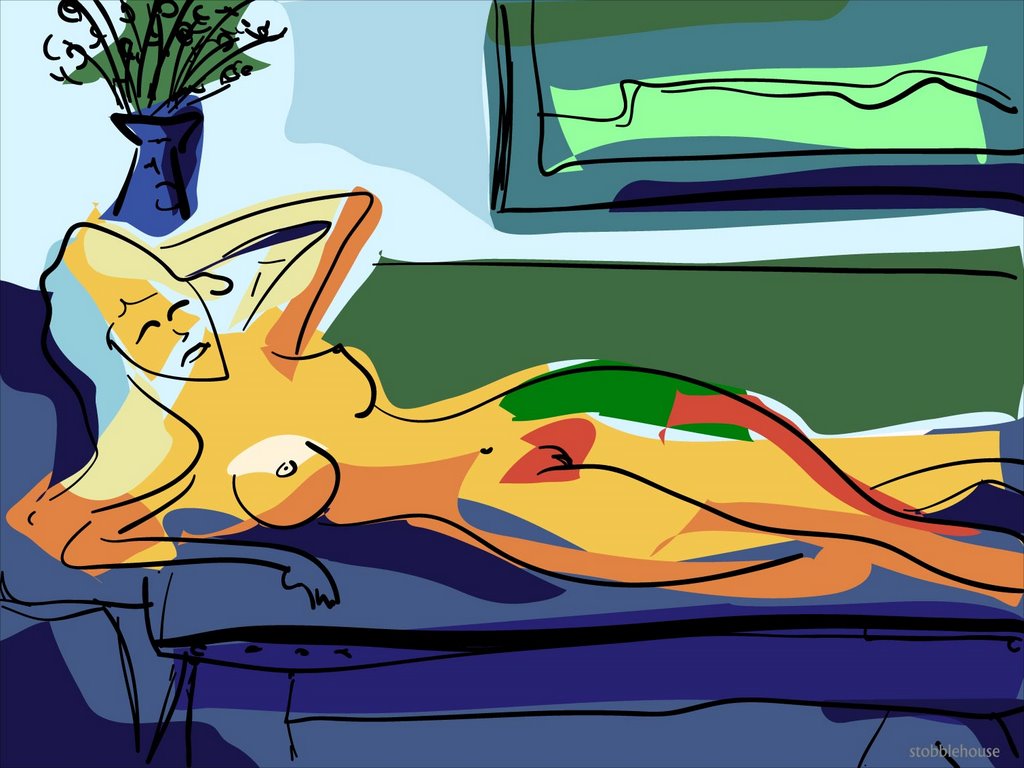(See review below)

"We’ve all seen paintings in the tradition of the Odalisque: a reclining nude female figure, languid and sensual, redolent of far-away lands and filled with promises of feminine eroticism and submission. During the early nineteenth century Ingres made popular this tradition in France with his painting “La Grande Odalisque” (1813). In 1863, Manet subverted it. He shocked the public with his painting “Olympia” (1863), a nude female figure that showed all the signs of her profession (as a courtesan) and class, rather than couching its sexual appeal in more acceptable guises to the European viewers at the time, as an ethereal nude goddess or a distant, Oriental slave. In Stobblehouse’s novel rendition of this recurrent motif, the eroticism of the reclining female is highlighted by its displaced colors within boundaries traced by black ink. The pudendum is a red rectangle; the body a yellowish tan overflowing from the dark contours of the body; the curves and movement of the reclining figure are highlighted in orange, while a dark green stripe draws attention to the sensual curve of her hip. This painting shows the influence of several artistic currents, while also remaining unique and distinct. "
Claudia MoscoviciClaudia Moscovici is the author of seven scholarly books on political philosophy and the Romantic movement, which include Romanticism and Postromanticism (Rowman and Littlefield, 2007), Gender and Citizenship (Rowman and Littlefield, 2000) and Double Dialectics (Rowman and Littlefield, 2002). She co-founded the international art movement called postromanticism with the Mexican sculptor Leonardo Pereznieto (postromanticism.com). She taught philosophy, literature and arts and ideas at Boston University and at the University of Michigan. She has also published poetry, short stories and essays in many literary magazines.